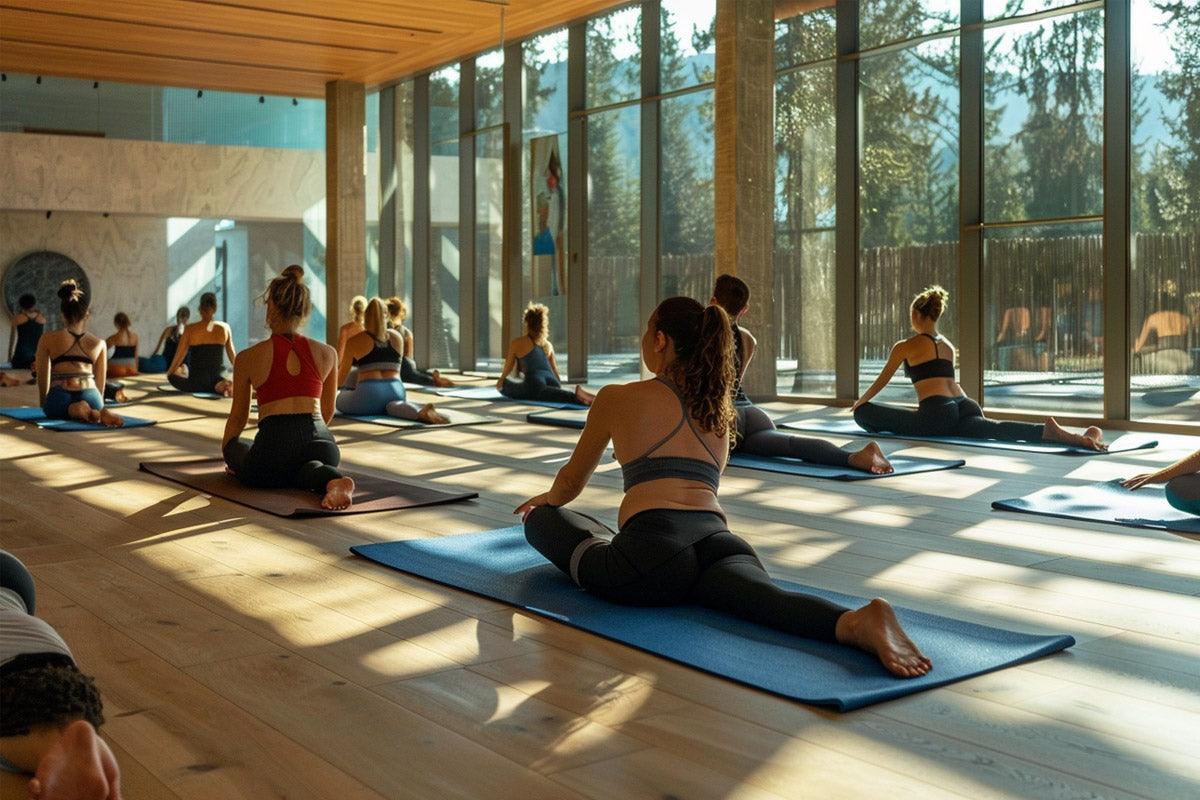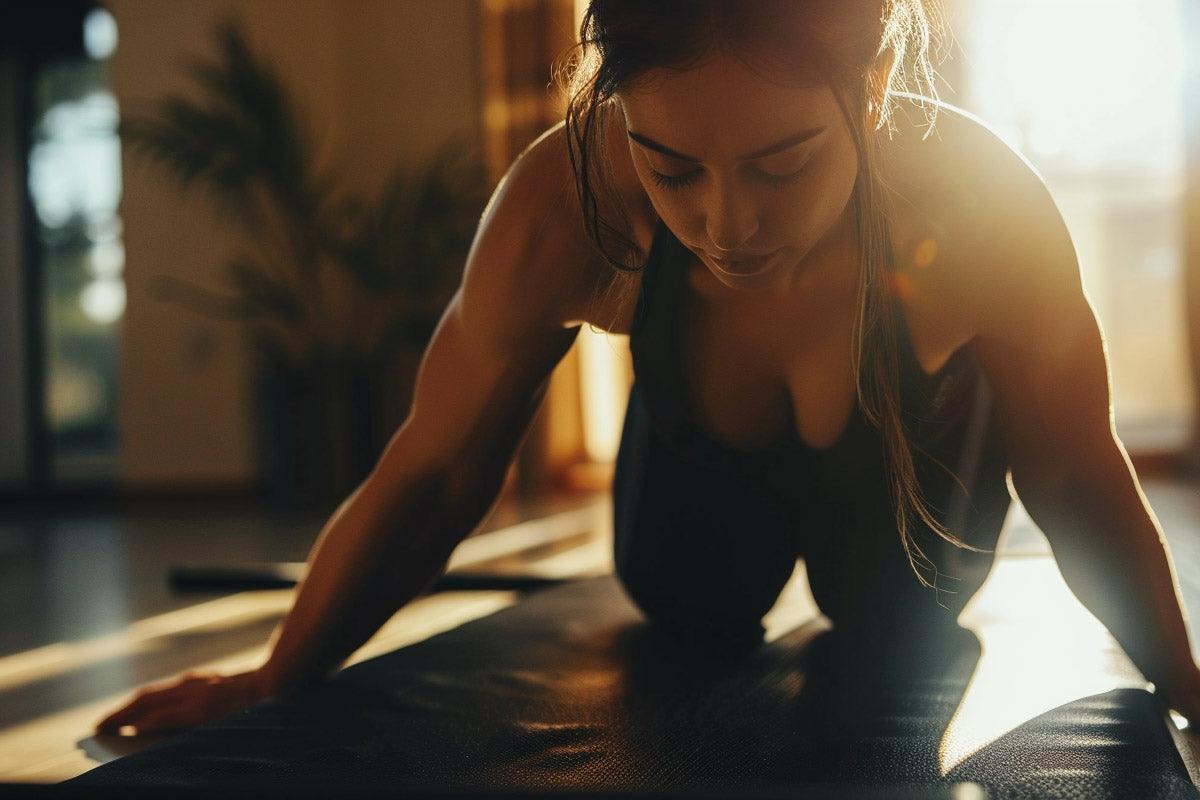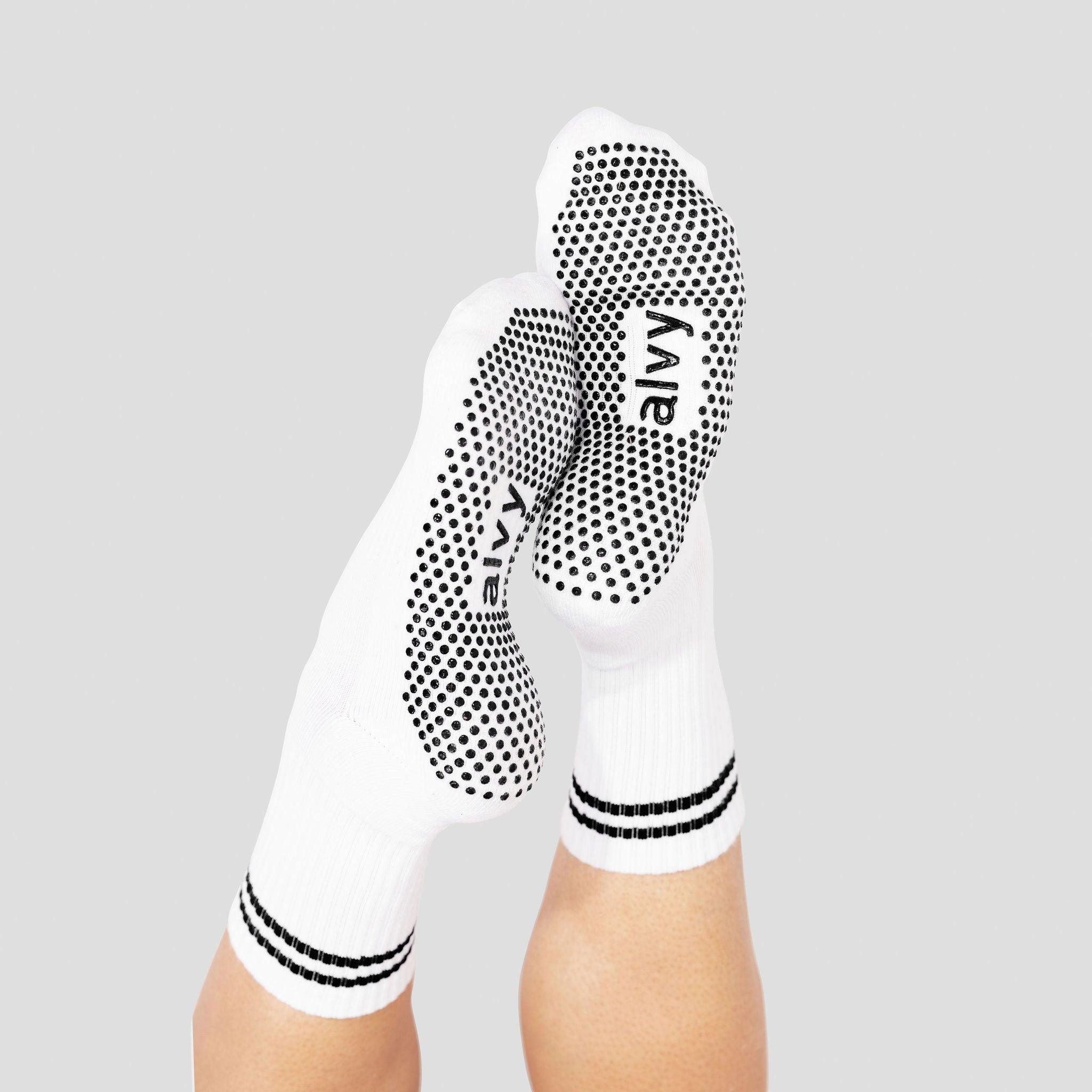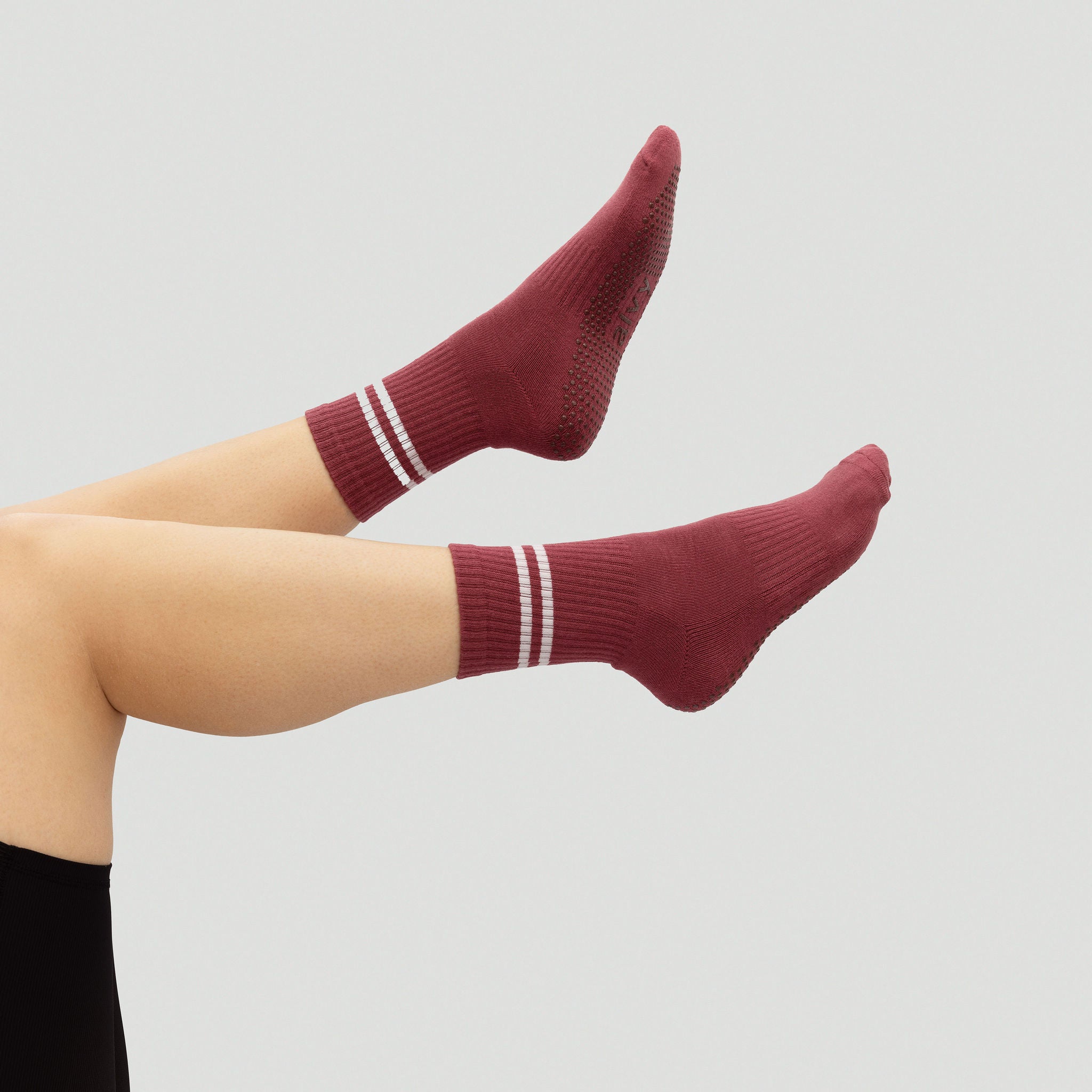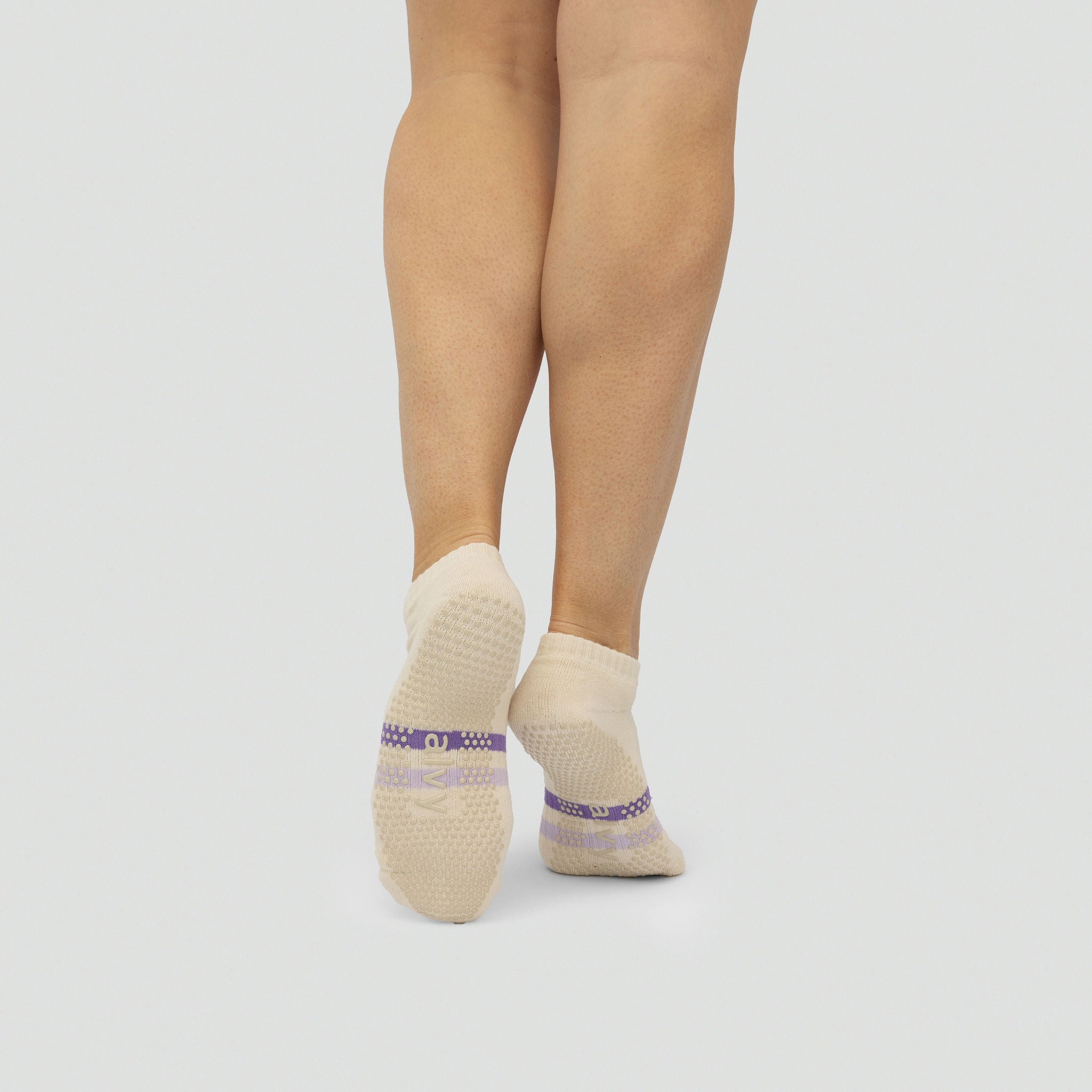People often confuse Pilates and yoga. However, the two have practical differences that lead to slightly different results. While there is some overlap, knowing what they are could save you money and time.
Key Takeaways:
- Pilates is a more active style of exercise that focuses on core strength, flexibility and body control under tension. It can be performed on a mat or a specialised reformer machine with Pilates socks.
- Yoga differs from Pilates in that it combines body, mind, and spirit in harmony.
- Pilates is the better option if you want to enhance your flexibility, balance, sports performance, core strength, and overall physical function. However, it tends to be more costly compared to yoga.
How Pilates and Yoga Differ
While both Pilates and yoga aim to enhance well-being and aspects of physical health, such as balance and flexibility, they are not the same. Pilates is a more active exercise that stabilises the core for better posture and functional strength. It also aims to tone smaller groups of muscles often overlooked during standard gym sessions, making it an all-inclusive form of body improvement.
As opposed to yoga, which doesn’t use any equipment, Pilates uses specialised equipment like the Reformer and emphasises controlled, slow, and precise movements.
Compared to Pilates's active movements and alignment, Yoga incorporates stretching, balancing, and meditation for overall physical and mental well-being. Both approaches are complementary but distinct since they each provide special advantages.
Background of Pilates
Joseph Pilates created the low-impact Pilates exercise method in the early 20th century to enhance flexibility, core strength, and general body control. It’s an active exercise that can be done on a mat or a reformer machine that aims to stabilise the spine and pelvis. Breathing is important to perform Pilates exercises, which improve posture and encourage effective, functional strength.
Pilates is well known for its ability to improve body functionality and flexibility but it also helps to tone muscles and enhance symmetrical balance.
The Benefits of Pilates
The benefits of Pilates mainly focus on the physical aspect but there are mental advantages too.
Better core stability and strength
Once you get going, one of the most commonly known and easily realised benefits is better core strength, leading to stability. Almost all Pilates routines focus on this aspect.
For example, common Pilates exercises like the "Plank" and "Hundred" call for prolonged core engagement to support the spine and preserve balance. You need to engage your abdominals to perform the exercise properly.
A more functional body
Pilates improves general body strength in areas where a traditional gym can’t, naturally leading to better functional use in daily life and sports. You will definitely feel the improvement if you go to Pilates at least three times a week. The improved general functional strength lowers the chance of developing back pain.
Enhanced adaptability
Pilates uses stretches incorporated into postures, like the "Swan" or "Roll-Up," to lengthen muscles and improve hip flexors, hamstrings, and spine flexibility. These exercises directly improve one's adaptability, and they also feel great.
Increased range of motion
Activities such as the "Spine Stretch" and "Leg Circles" on a mat or reformer increase the joint range of motion in the pelvis. If you are always stiff in your pelvis area, then many “legs in straps” exercises will greatly improve it.
Improved alignment
It won’t be overly obvious if you are just starting Pilates, but you might notice that the instructors emphasise keeping the pelvis in certain positions while exercising. For instance, the "Teaser" engages the core while assisting pelvic and spine alignment. Additionally, most “legs in straps” exercises involve keeping your pelvis and glutes to the reformer, which makes you use your abdominals instead of your legs to do the work.
Symmetrical strengthening
While this doesn’t apply to all Pilates exercises, it certainly is a strong theme. Pilates is very good at toning and strengthening both sides of the body or arms and legs since you will need to alternate on both sides or have one side under tension.
Let's Explain Yoga Now
Originating in ancient India, yoga is a holistic practice that has developed over thousands of years. It incorporates breathing exercises (pranayama), relaxation methods, meditation, and physical positions (asanas). By bringing the body, mind, and spirit into harmony, yoga promotes physical health, mental clarity, and emotional well-being.
Yoga has various forms and techniques, each focusing on a certain element, such as strength, flexibility, awareness, or spiritual development. It is a popular practice worldwide because of its many health advantages and capacity to foster balance and inner serenity.
These Are The Benefits of Yoga
Increases strength and flexibility
Over time, flexibility increases through the series of yoga positions that stretch muscles and joints. Increased flexibility can be attributed to an increased range of motion, a lower chance of injury, and ease of daily activities.
Many yoga poses require holding positions that use muscles. This helps develop strength, especially in the arms, legs, back, and core. Planks, warrior poses, and balancing are strength-building poses that enhance general physical endurance.
It encourages calmness (and lowers stress)
Yoga uses deep breathing exercises called pranayama, which stimulate the parasympathetic nervous system, lowering tension and promoting relaxation. Diaphragmatic breathing and alternating nostril breathing are two methods that promote calmness and relaxation by calming the body and mind.
Improved coordination and equilibrium
Yoga positions frequently require maintaining balance and stability, enhancing proprioception - awareness of one's body - and coordination. Posses that require balance, such as Eagle Pose (Garudasana) and Tree Pose (Vrksasana), test these abilities and improve physical equilibrium.
Boosted vitality levels
Dynamic yoga styles like Vinyasa or Power Yoga use coordinated breathing and flowing poses to improve circulation and oxygen intake. This promotes a more lively and active daily experience by increasing energy levels and decreasing feelings of lethargy.
Yoga and Pilates Similarities
There is some overlap between Pilates and yoga. Here are the three main similarities.
- Mat Pilates and yoga can be performed with minimal equipment. All you need is a mat and a few extra supports, like a Pilates ring or a block.
- They stress diaphragmatic breathing or inhaling deeply into the belly and the importance of using the breath correctly during activity.
- Pilates and yoga call for mental focus and can potentially lower stress. Additionally, they can be adjusted for varying degrees of fitness.
Which One Should You Do?
In my opinion, the decision to separate Pilates from yoga comes down to the goals that you want to achieve. Pilates is the better choice if you want to improve your flexibility, balance, sports performance, core strength, and overall bodily function. It is more active, engages large muscle groups, and tones muscles. But it is generally more expensive than yoga, so you should consider the cost of Pilates classes.
But if you want mindfulness, calmness, flexibility, and mental clarity without burning up a sweat, then yoga could be for you.


